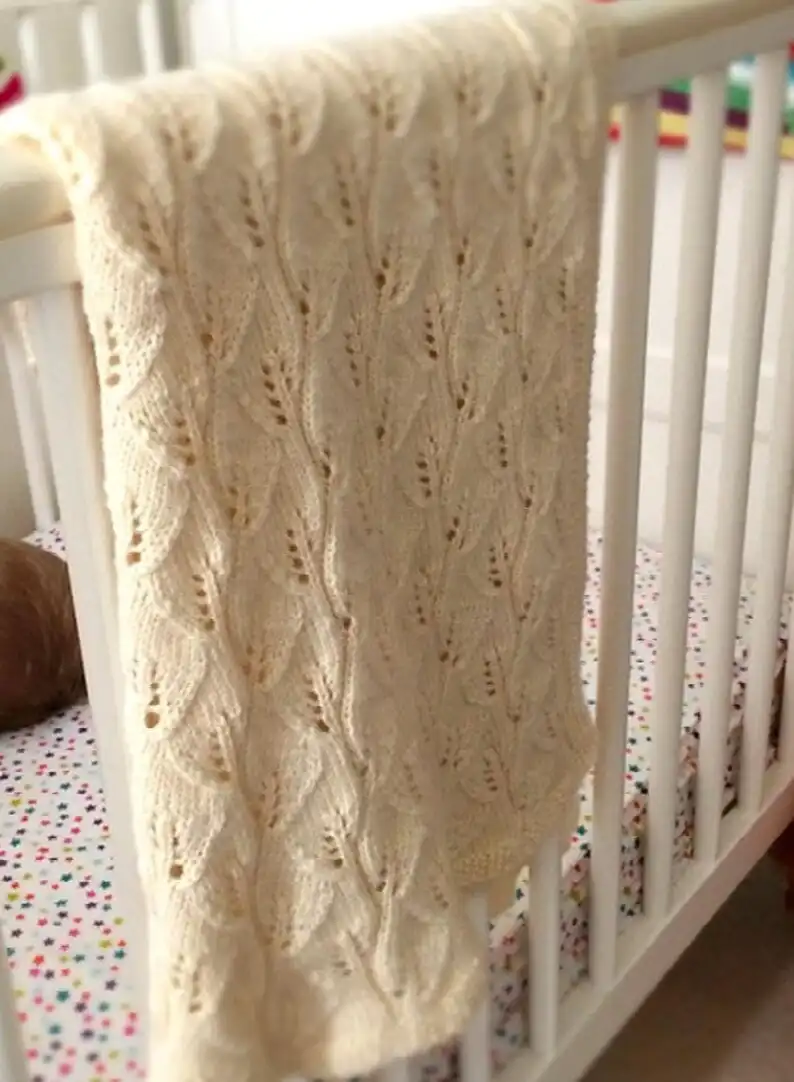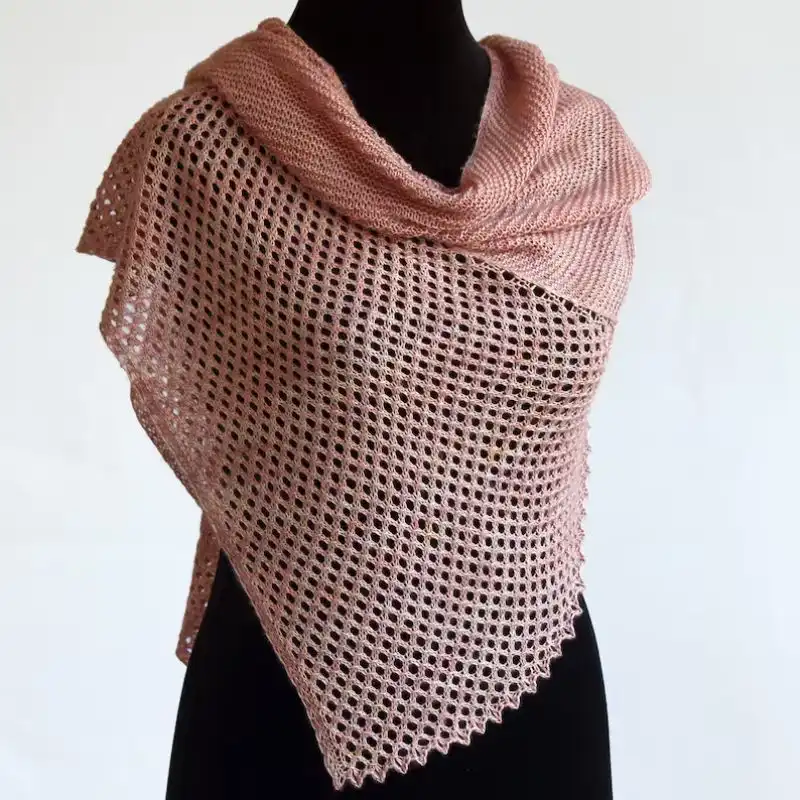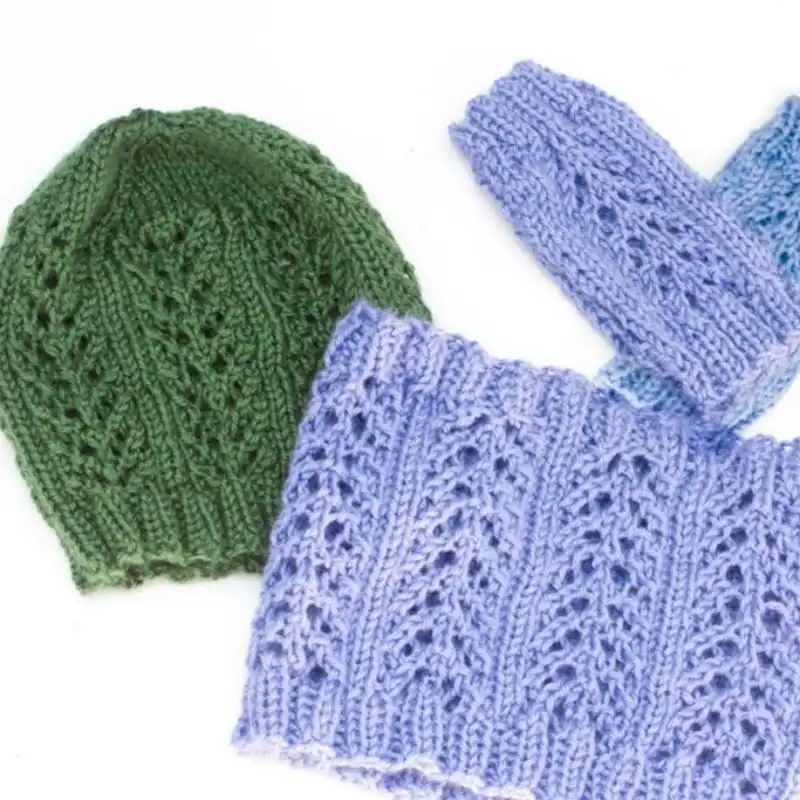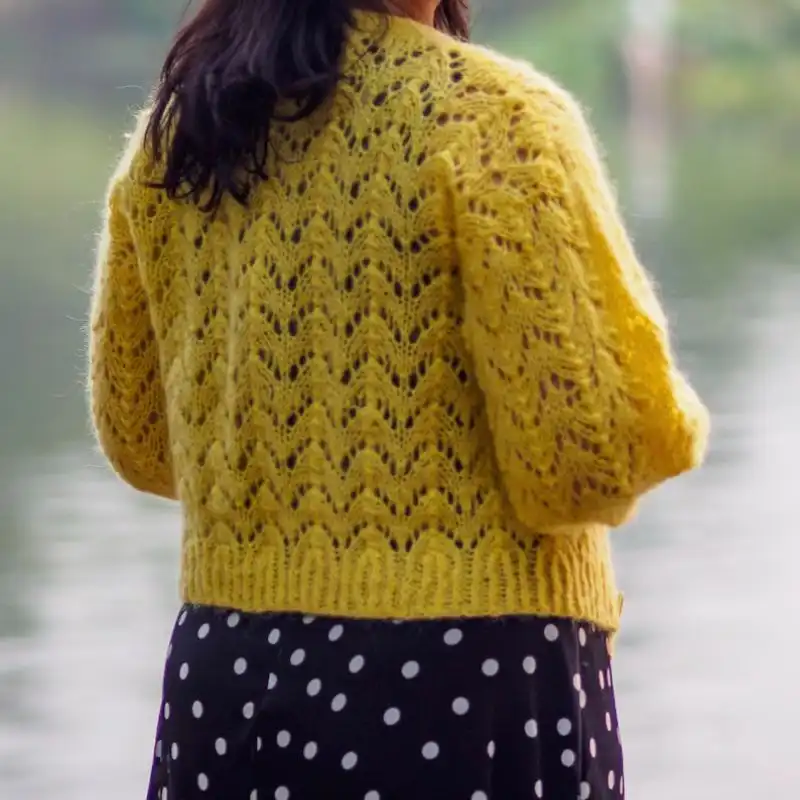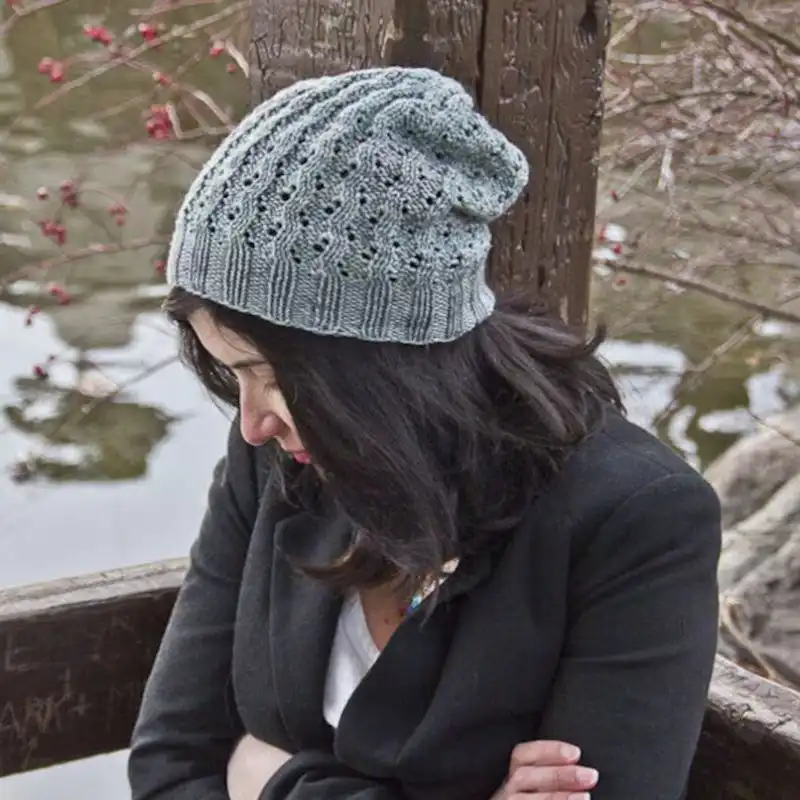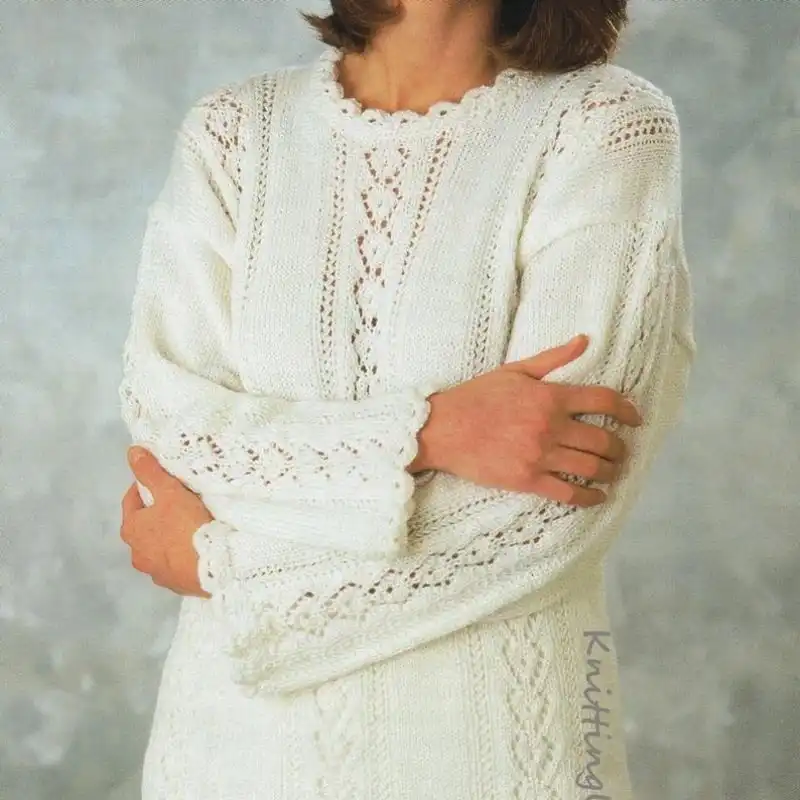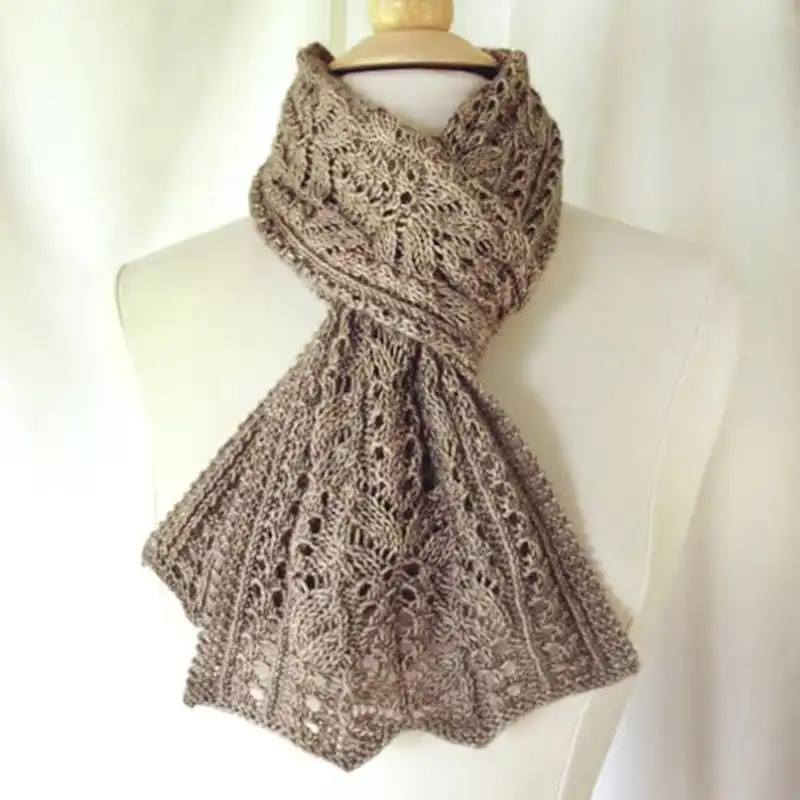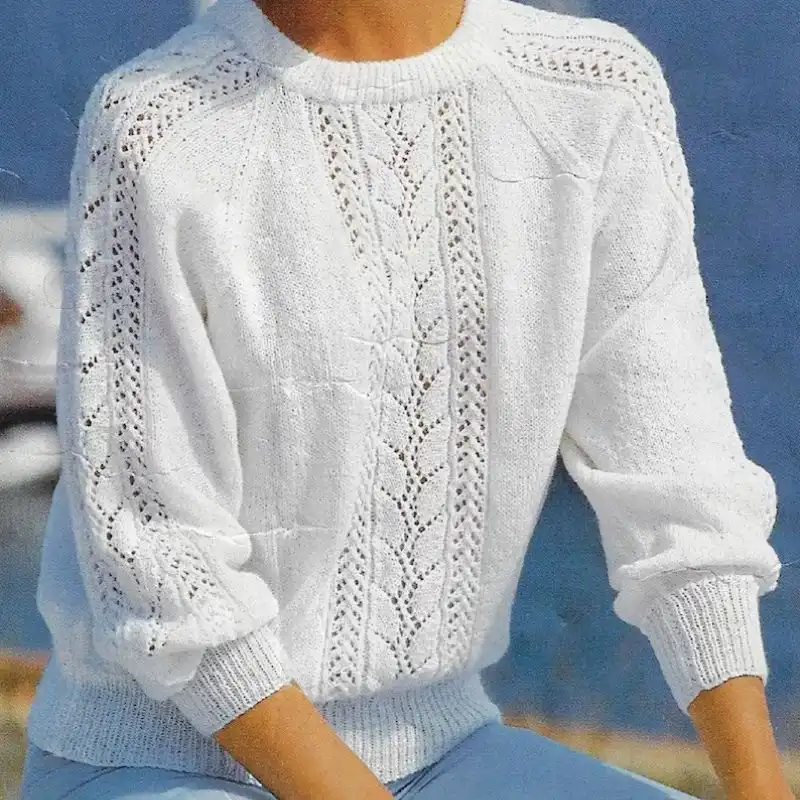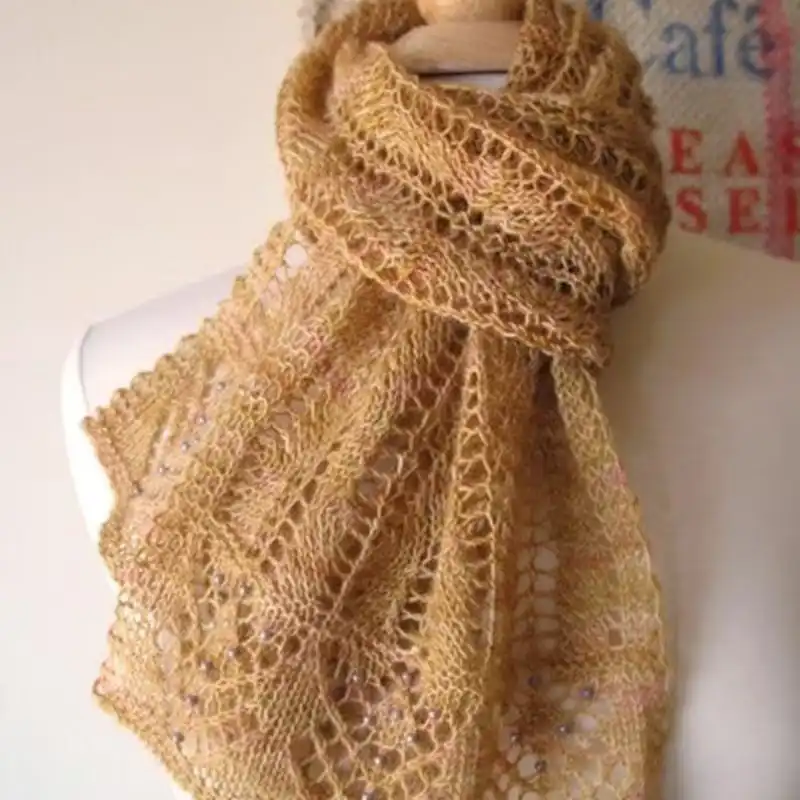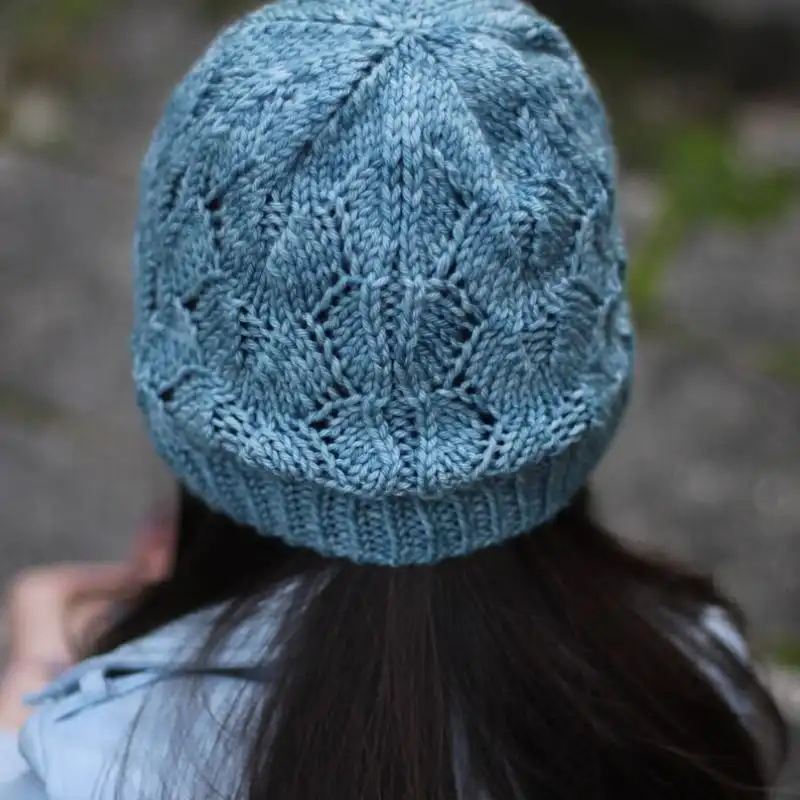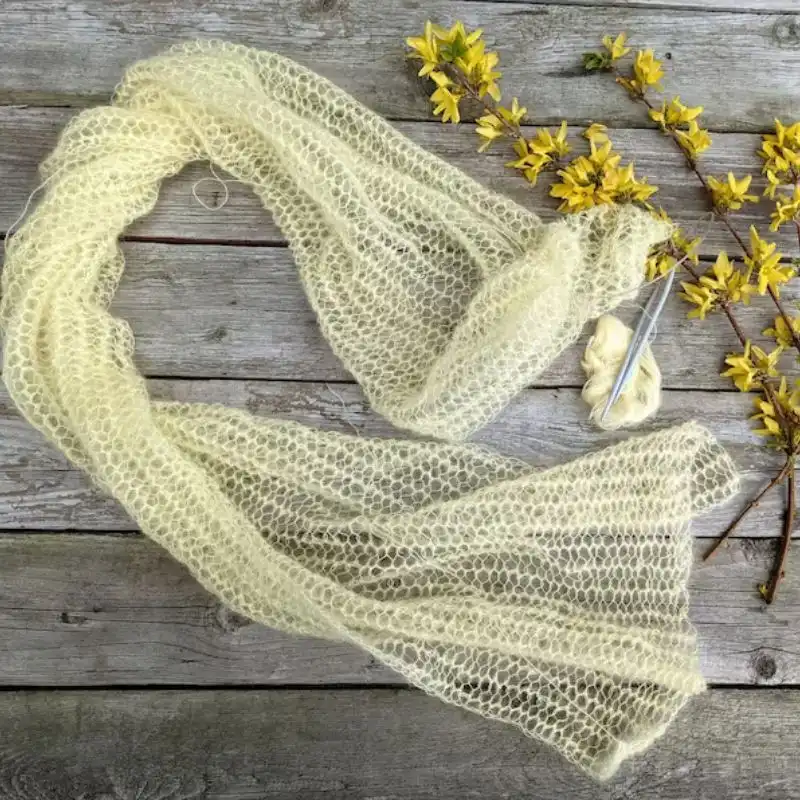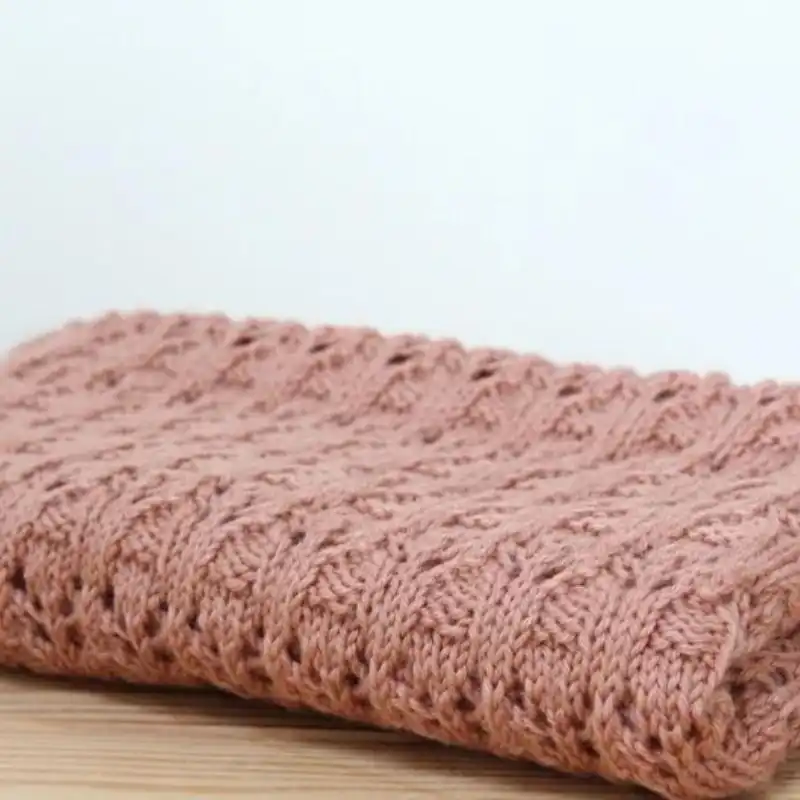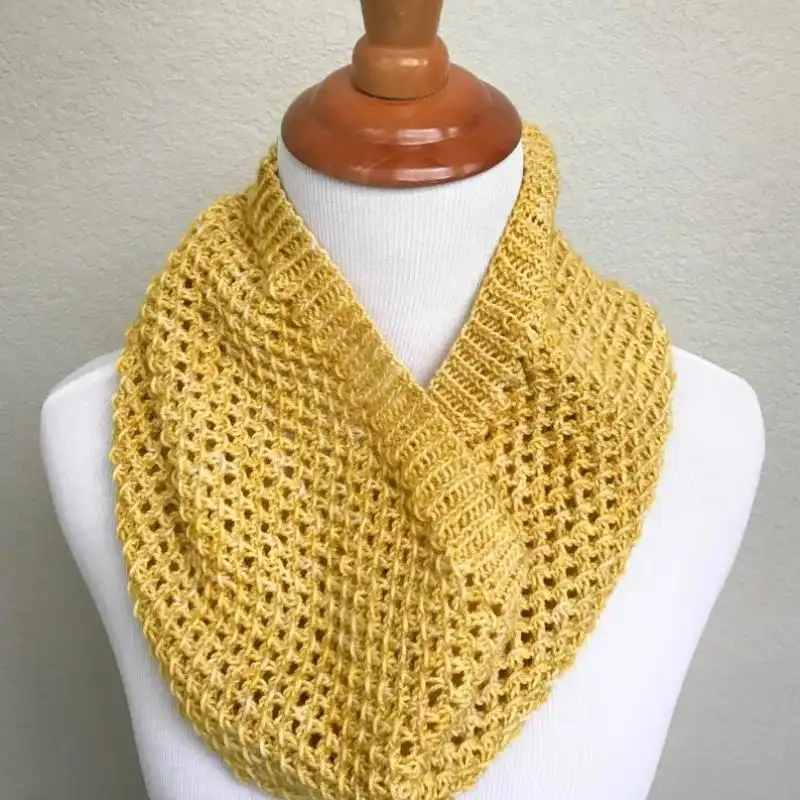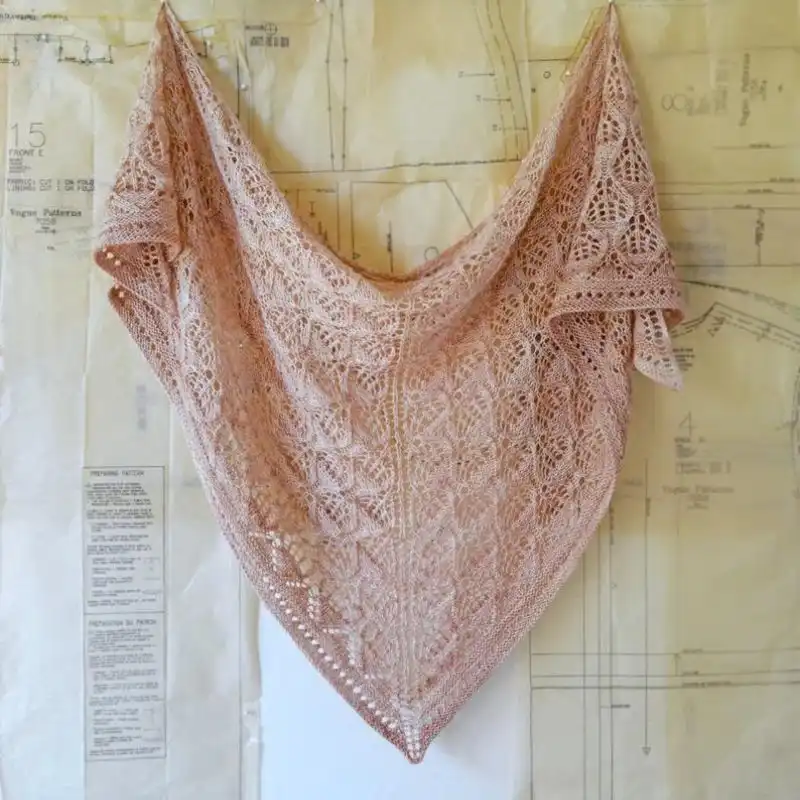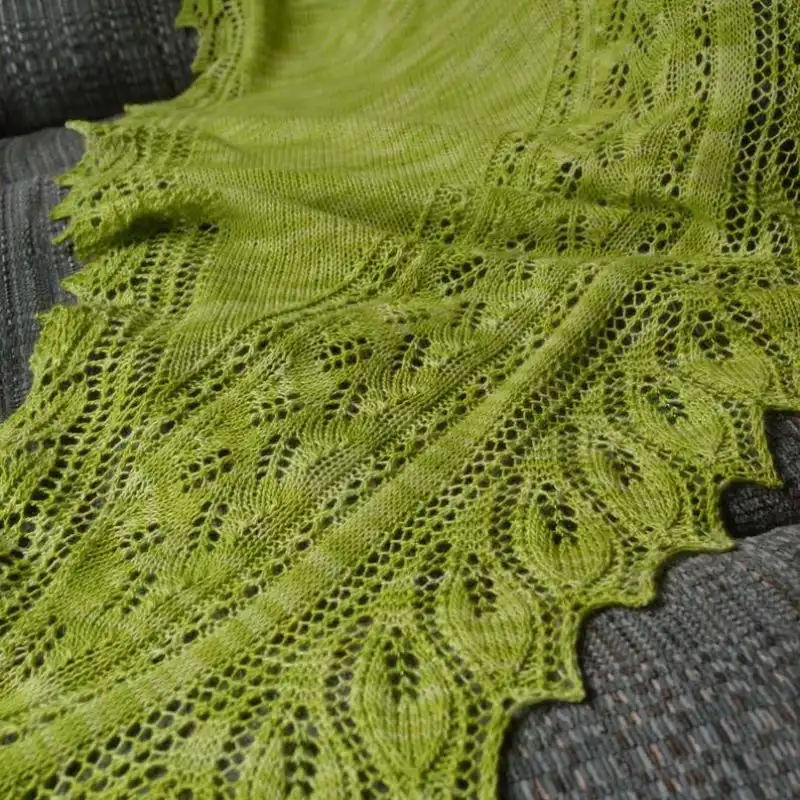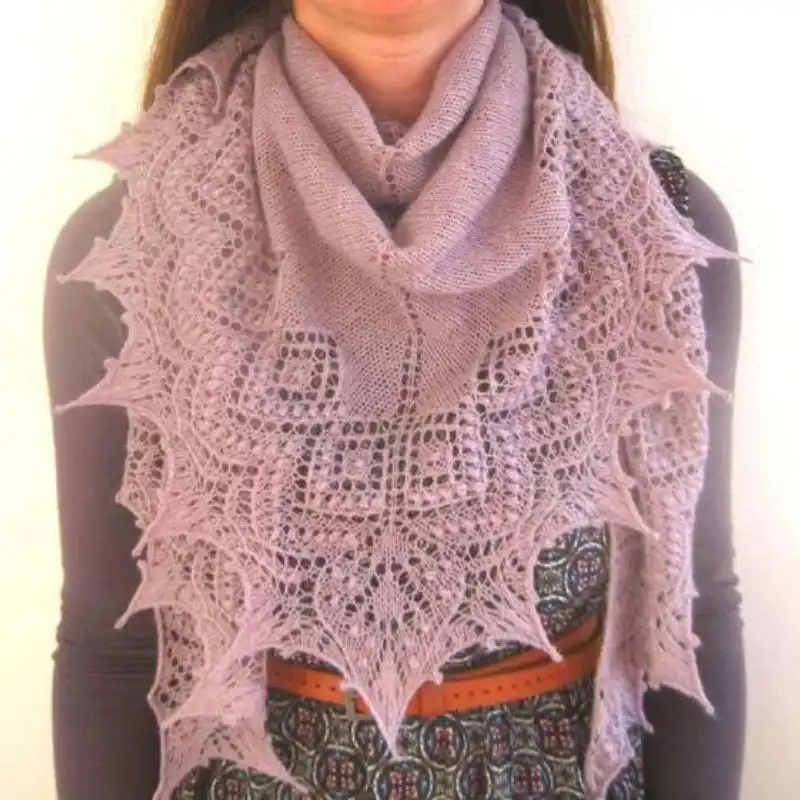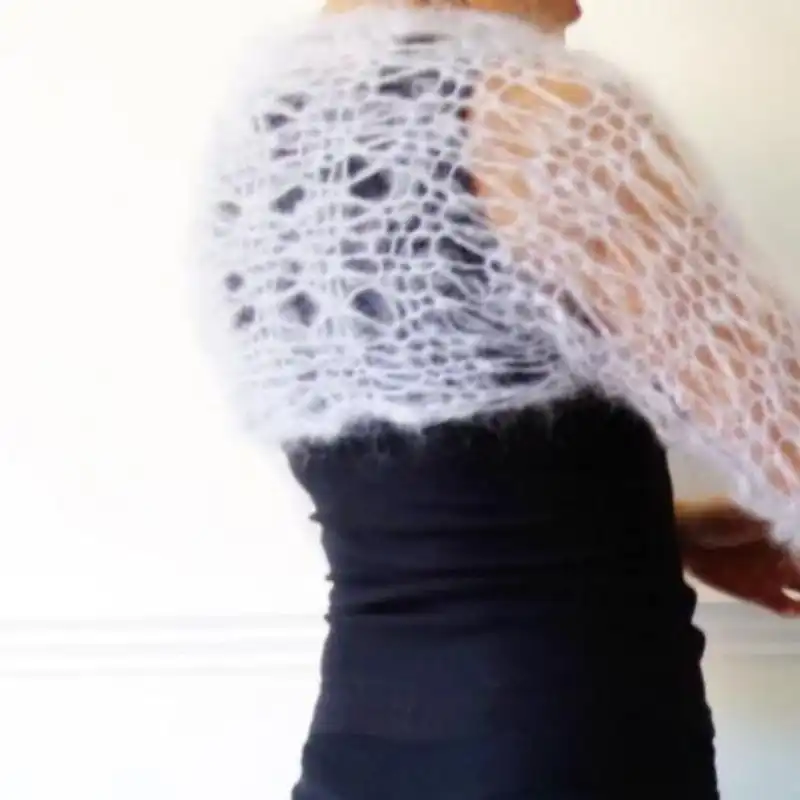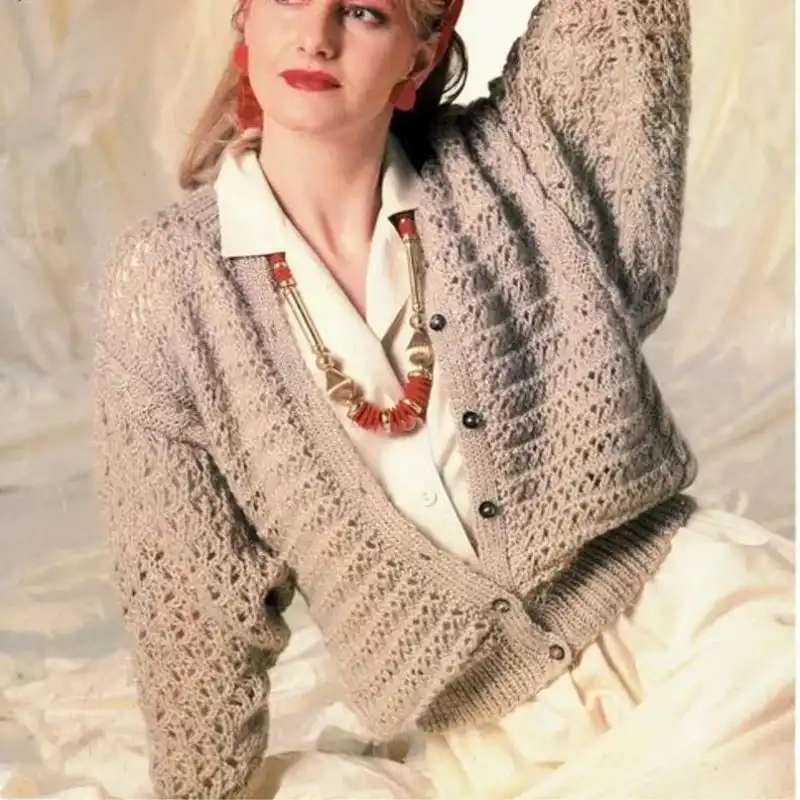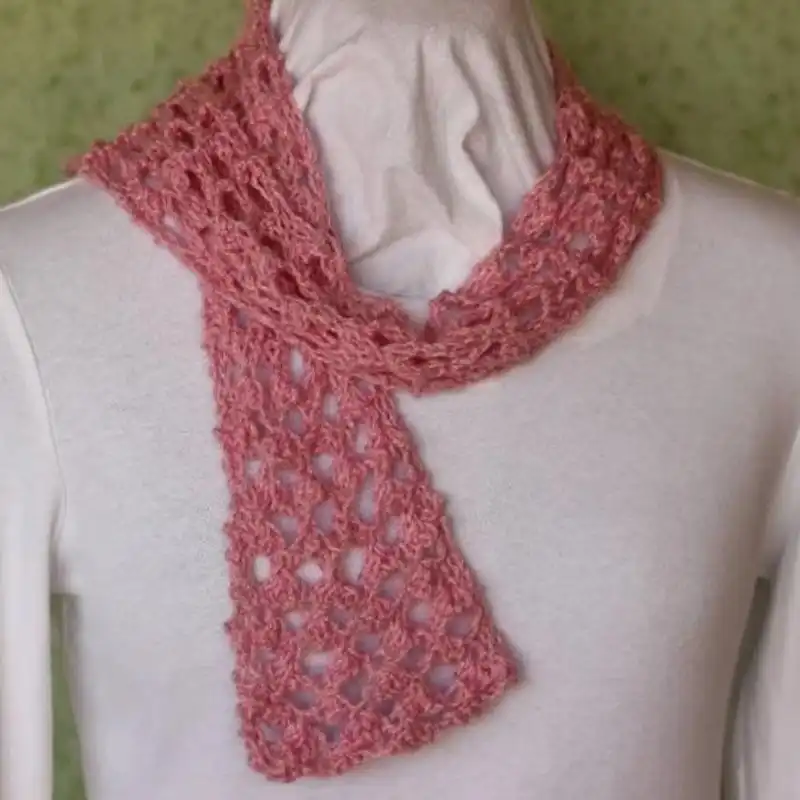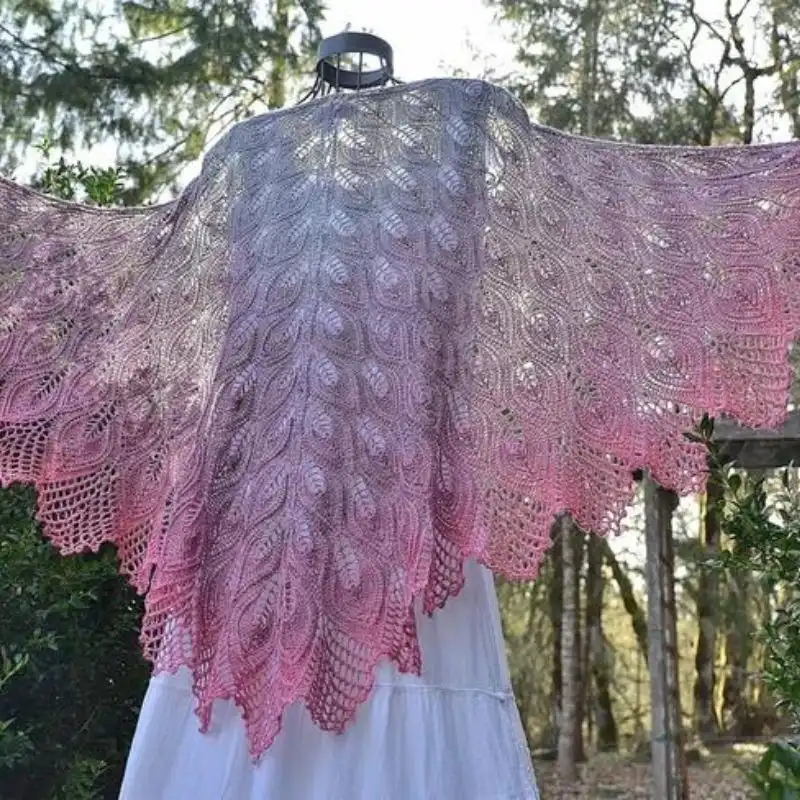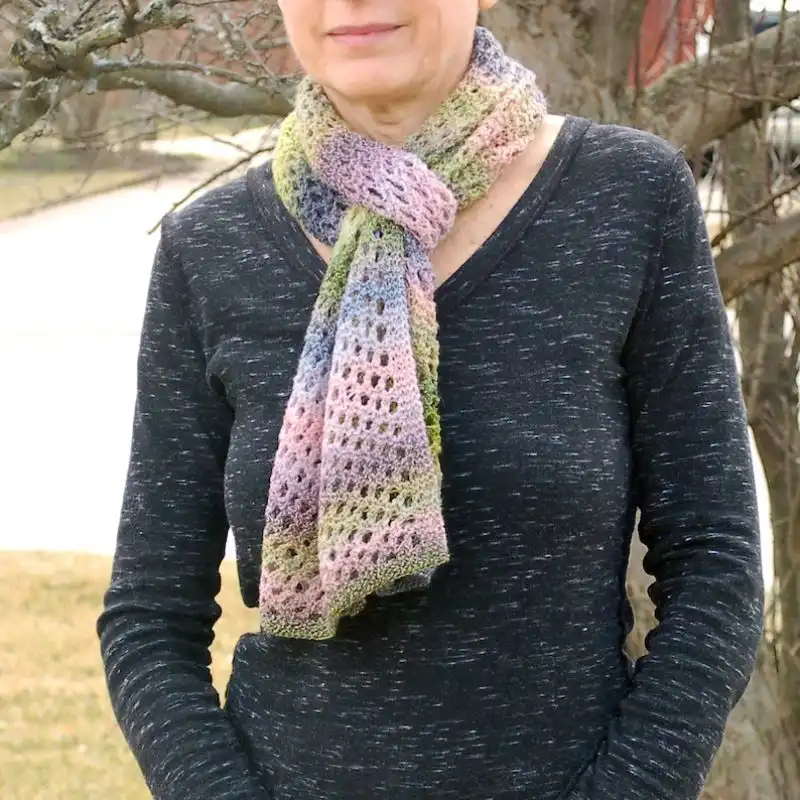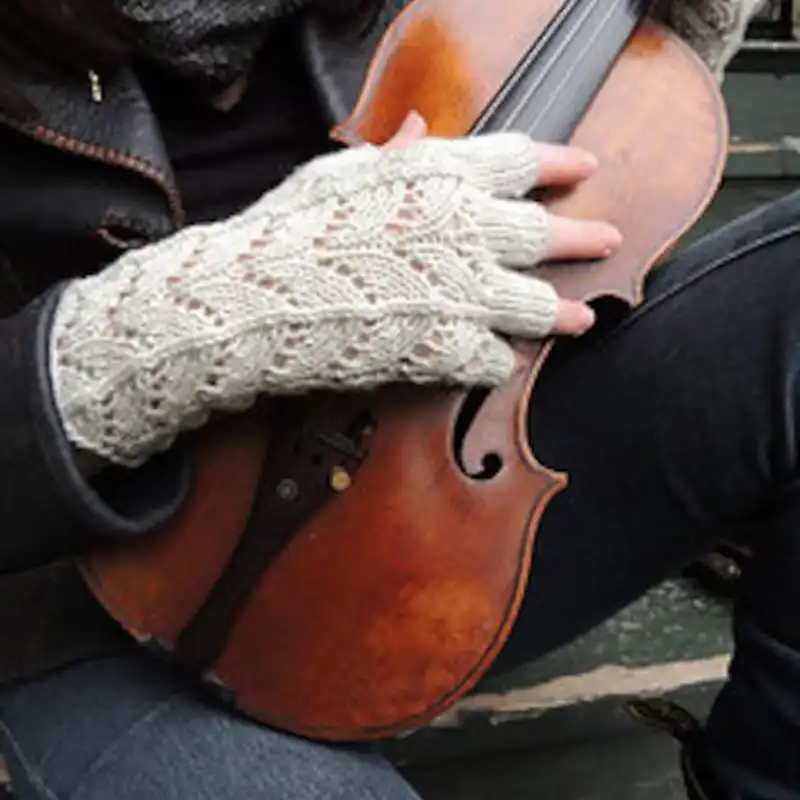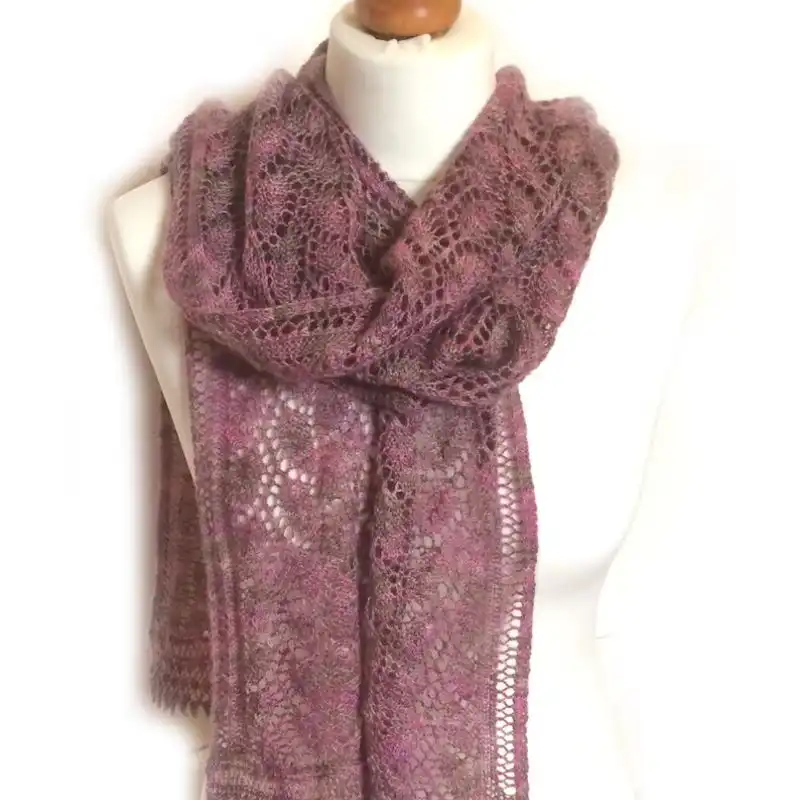Crafting delicate lace patterns can be like unraveling a mystery: intricate, daunting, but oh-so rewarding! As an expert knitter, I’ve often heard the sighs of frustration: “Lace knitting looks complicated!” Well, fear not! The greatest advantage of lace knitting is its flexibility and the beauty it adds to any project. What is the best way to master it?

Dive into these 35 stunning lace knitting patterns. They are not just patterns but a treasure trove of expert tips and tricks. One of the easiest ways to elevate your knitting game is by using patterns that range from the simplest to the most elaborate designs, ensuring there’s something for every skill level.
My top picks will guide you through the art of lace knitting, the easiest way to transform yarn into breathtaking creations.
All you need is a bit of patience and the proper guidance. An excellent option for knitters looking to solve the problem of monotonous patterns, these 35 designs are your best bet.
With these, you’ll never find yourself at a loss – they are the most effective way to resolve any lace knitting issue. Welcome to a whimsical world where every stitch tells a story, and every pattern is a gateway to something spectacular!
Versatility Of Lacy Patterns
Lace knitting, a timeless craft, has been woven through centuries, capturing the hearts of knitters and admirers alike. Its popularity lies in its mesmerizing intricacy and elegance, making it a perennial favorite in the knitting world.
The versatility of lace knitting is unparalleled, allowing for a wide range of designs from delicate, airy shawls to robust, cozy sweaters.
The beauty of lace patterns is their adaptability. They can be incorporated into small projects like bookmarks and headbands or take center stage in larger pieces such as wedding dresses and elaborate afghans. This versatility extends to yarn choices and needle sizes, offering endless possibilities for customization and creativity.
Furthermore, lace knitting isn’t confined to traditional designs. Modern knitters have embraced this technique, blending it with contemporary styles to create unique and trendy pieces.
The ability to modify patterns to suit personal tastes or to scale the complexity up or down makes lace knitting accessible to both novices and seasoned experts.The internet and social media have also played a significant role in the resurgence of the popularity of lace knitting.
Online communities and platforms offer a space for knitters to share their creations, exchange tips, and find inspiration. It has led to a global appreciation of the craft, transcending cultural and geographical boundaries.
RELATED: 43 Chunky Scarf Knitting Patterns With Effortless Style And Cozy Warmth
Basic Stitches For A Lace Knitting Pattern
Lace knitting is characterized by its delicate, openwork patterns, created by basic stitches and special techniques. Here are some of the fundamental stitches used in lace knitting, each with a brief explanation:
- Knit Stitch (K): The most basic stitch in knitting, where the yarn is looped through the stitch from the front to the back.
- Purl Stitch (P): The reverse of the knit stitch, looped from the back to the front, is often used in lace to provide texture and contrast.
- Yarn Over (YO): This creates an intentional hole or eyelet in the fabric. Adding a stitch, you bring the yarn to the front and over the needle. In lace patterns, yarnovers are often paired with decreases to maintain the stitch count.
- Knit Two Together (K2tog): A simple right-slanting decrease. You knit two stitches together as if they were one, which reduces the stitch count by one.
- Slip, Slip, Knit (SSK): Another decrease that slants to the left. You slip two stitches knitwise one at a time, then knit them together through the back loop.
- Slip One, Knit One, Pass Slipped Stitch Over (SKP or S1K1PSSO): A left-slanting decrease. You slip one stitch, knit the next, then pass the slipped stitch over the knit stitch and off the needle.
- Purl Two Together (P2tog): Similar to K2tog but with purl stitches. It decreases the stitch count and creates a right-slanting decrease on the purl side of the work.
- Purl Three Together (P3tog): This decreases two stitches simultaneously, similar to P2tog but involving three stitches. It’s used for more dramatic shaping in lace.
- Central Double Decrease (CDD): This decrease involves slipping two stitches together as if to knit, knitting one stitch, and then passing the two slipped stitches over the knit stitch. It creates a symmetrical, centered decrease.
- Make One Left (M1L) And Make One Right (M1R): These are increases that lean to the left or right and shape lace patterns without creating holes like yarnovers.
Essential Tools & Materials
Lace knitting, known for its delicate and intricate patterns, requires a few essential tools and materials. Here’s a list of what you’ll need:
Abbreviations For Lace Knitting Patterns
Lace knitting patterns often use a variety of abbreviations to simplify the presentation of complex instructions. Here’s a list of common abbreviations you might encounter in lace knitting patterns:
- CO: Cast On
- BO: Bind Off
- K: Knit
- P: Purl
- YO: Yarn Over (creates an eyelet or hole)
- K2tog: Knit Two Together (a right-slanting decrease)
- SSK: Slip, Slip, Knit (a left-slanting decrease)
- SKP or S1K1PSSO: Slip One, Knit One, Pass Slipped Stitch Over (another left-slanting decrease)
- P2tog: Purl Two Together (a right-slanting decrease on the purl side)
- P3tog: Purl Three Together (a more pronounced decrease)
- CDD: Central Double Decrease (a symmetrical decrease)
- M1: Make One (an increase)
- M1L: Make One Left (a left-leaning increase)
- M1R: Make One Right (a right-leaning increase)
- Psso: Pass Slipped Stitch Over
- Tbl: Through Back Loop
- RS: Right Side (the front or public side of the work)
- WS: Wrong Side (the back or private side of the work)
- st(s): Stitch(es)
- Rep: Repeat
- SL: Slip (transferring a stitch from one needle to another without knitting it)
- PM: Place Marker
- SM: Slip Marker
- RM: Remove Marker
- BEG: Beginning
- Cont: Continue
- Alt: Alternate
- Dec: Decrease
- Inc: Increase
- Rnd(s): Round(s) (used in circular knitting)
- Sp: Space
- Wyif: With Yarn In Front
- Wyib: With Yarn In Back
Which Yarn Is Best For Lace Knitting Patterns?
As an experienced knitter, I’ve worked with various yarns for lace knitting, and I can say that the choice of yarn can significantly impact the look and feel of your finished piece. Here are some yarn types that I find work best for lace knitting, each offering its unique qualities:
- Merino Wool: This is one of my favorites for lace projects. Merino wool is soft and warm and has a lovely drape when knit into lace patterns. It’s also quite elastic, which is excellent for blocking out those intricate lace designs. Merino wool lace yarns often come in beautiful dyed colors, adding depth and richness to the lacework.
- Silk: Silk yarns are a luxurious choice for lace knitting. They have a natural sheen and elegance, enhancing the delicacy of lace patterns. Silk also blocks well, helping to define the stitches distinctly. However, it’s less elastic than wool, making it more challenging to work with.
- Cashmere or Cashmere Blends: For an ultra-soft, luxurious feel, cashmere or cashmere blend yarns are superb. They add a touch of luxury to any lace knitting project and are incredibly soft against the skin. These yarns are perfect for unique lace accessories like shawls or scarves.
- Cotton and Cotton Blends: Cotton is an excellent option for warmer-weather lace projects. It’s more fantastic than wool and drapes beautifully. However, it doesn’t have the same elasticity, so it might not hold the lace open as well as wool or silk. Sometimes, cotton blends with silk or synthetic fibers can offer a good balance.
- Linen: Linen has a unique, crisp texture that can add a lovely rustic feel to lace projects. It softens with use and washing, making it an excellent choice for summer shawls or tops. Like cotton, it’s cooler and has less stretch.
- Bamboo: Bamboo yarn is another excellent plant-based option. It’s soft, with a slight sheen, and drapes beautifully. It’s also hypoallergenic and calm, making it a good choice for those with wool allergies or for summer lace knitting.
- Alpaca: Alpaca is warmer than wool and incredibly soft. It’s ideal for cozy, luxurious lace projects. However, it can be a bit slippery and lacks some of the elasticity of wool, so it’s better for more experienced knitters.
- Synthetic Yarns (like Acrylics): While not my first choice for lace, synthetic yarns like acrylic can be a good budget-friendly and easy-care option. They come in a wide range of colors and are durable.
How Much Yarn Do I Need For Lace Knitting Patterns?
Determining how much yarn you’ll need for a lace knitting project can be a guessing game, but I’ve picked up a few tips over the years. The amount of yarn required depends on several factors: the pattern complexity, the size of the project, the yarn weight, and the needle size.
For smaller projects like a delicate lace scarf or a pair of socks, one or two skeins of lace-weight yarn are often sufficient. For larger projects like a shawl or a wrap, it’s safer to have at least 800 to 1000 meters, usually around three to four skeins.
Checking the pattern recommendations is always a good idea, as designers usually specify the amount of yarn needed. I also recommend buying a little extra yarn than the pattern calls for to be safe. Running out of yarn mid-project, especially if it’s a dyed lot that’s hard to match, can be a real headache!
RELATED: 40 Bralette Knitting Patterns With Enchanting And Graceful Patterns
Techniques & Stitches For Knitting Lacy Creations
Lace knitting, with its delicate and intricate patterns, requires a blend of specific techniques and stitches. Mastery of these elements can turn a simple yarn into a work of art. Here are some of the critical techniques and stitches required for lace knitting:
- Yarn Over (YO): This is the most fundamental technique in lace knitting. A yarn over creates an eyelet or hole in the fabric, which is the defining characteristic of lace. It’s achieved by wrapping the yarn around the needle, creating an additional stitch.
- Decreases: Lace patterns often involve decreases to balance the yarn and maintain the stitch count. Common decreases include:
- Knit Two Together (K2tog): A primary right-slanting decrease.
- Slip, Slip, Knit (SSK): A left-slanting decrease mirrors K2tog.
- Slip One, Knit One, Pass Slipped Stitch Over (SKP or S1K1PSSO): Another left-slanting decrease.
- Purl Two Together (P2tog): A decrease on the purl side of the work.
- Blocking: Once the knitting is done, lace projects must be blocked. This process involves wetting or steaming the finished piece and then pinning it into shape. Blocking opens the lace pattern, making the holes and designs more pronounced and giving the piece its final shape and drape.
- Lifelines: Since lace knitting can be intricate and mistakes may be hard to correct, running a lifeline through a row of stitches can be a lifesaver. If you make a mistake, you can quickly unravel back to the lifeline without losing all your work.
- Reading Lace Charts: Many lace patterns are presented in chart form. Reading these charts, which graphically represent the stitches and repeats in each row, is crucial for complex patterns.
- Garter Stitch and Stockinette Stitch: These basic stitches are often used in lace knitting as a backdrop to make the lacework stand out. Garter stitch (knitting every row) and stockinette stitch (alternating knit and purl rows) are used for borders or to provide a rest row between more complex lace rows.
- Nupps and Bobbles: These are textural elements often found in lace knitting, especially in Estonian lace. Nupps create a small bump in the fabric and are made by knitting multiple stitches into one and then decreasing them back to one on the next row.
- Picot Edges: A decorative edge often used in lace knitting, made by casting on and binding off stitches in a specific way to create small loops along the edge.
Is It Beginner Friendly?
From my experience, lace knitting patterns can be challenging for beginners, primarily due to their intricate designs and the need for precise stitch counts. These patterns often involve a combination of yarn overs and decreases to create delicate openwork, which requires close attention to detail.
However, that doesn’t mean beginners should shy away from them. Starting with simpler lace patterns, like those with basic eyelets or repetitive, easy-to-memorize stitches, can be an excellent way for beginners to build their skills gradually.
It’s all about patience and practice. With time and experience, even complex lace patterns become approachable and enjoyable.
How Many Stitches Required To Cast On For Lacy Knitting Project?
Knowing how many stitches to cast on for your lacy knitting project is crucial as you dive into this delicate craft. But don’t worry, dear knitter, we’ve got you covered.
First things first, you should select your lace knitting pattern. Lace patterns come in various levels of complexity, and you’ll find different stitch count requirements depending on the design chosen.
A simple way, like the beginner’s guide to knit lace, will have a separate stitch count compared to more intricate patterns.
Now, let us consider the gauge of your knitting. Gauge refers to the number of stitches and rows you knit per inch. Your yarn choice, needle size, and personal knitting tension determine it. Make sure to incorporate a swatch and measure your gauge so your project comes out the desired size.
To calculate the cast-on stitches, you’ll need your desired width and your stitches per inch. Just multiply them together! For example, if your pattern is ten stitches per inch and you want a 10-inch wide lace piece, you’ll need to cast on 100 stitches.
Feel free to consult resources like the Interactive Knitting Calculator, which helps determine the number of stitches to cast on. It’s as if the knitting fairies themselves designed this handy tool!
Lace knitting can be tricky at times, but with a confident and knowledgeable approach, you’ll undoubtedly succeed in your lacy endeavors.
Remember to keep your knitting tension consistent and enjoy the whimsical, intricate patterns that come to life on your needles. With a clear understanding of the process and a trusty cast-on stitch calculator, your lacy project will succeed.
Understanding Lace Knitting Patterns
Lace knitting is a beautiful technique that creates intricate patterns using yarn overs and decreases. Mastering lace knitting patterns may seem intimidating initially, but with some practice and a good understanding of the components, you can create stunning projects.
Components Of Lace Patterns
- Stitches: Lace knitting patterns involve a variety of stitches such as knit, purl, yarn over (yo), and knit two together. The wool over is an essential stitch in lace knitting, as it creates holes and increases the number of stitches on your needle.
- Knitting patterns: Patterns for lace knitting can be found in various forms, including written instructions, charts, or a combination of both. When reading a lace knitting chart, always remember to follow the chart from right to left.
- Instructions: Lace knitting patterns come with detailed instructions that guide you through every step of the process. These instructions may include information on yarn weight, needle size, gauge, and row-by-row directions for creating the lace pattern. Following these instructions carefully will help ensure your final product is a success.
- Skill levels: Lace knitting patterns can range from beginner-friendly to advanced. You can explore more complex and challenging patterns as you gain confidence in your lace knitting skills. To start, look for beginner-friendly ways involving simple stitches and shorter repeats.
How To Knit A Beginner-Friendly Lace Pattern?
Knitting a beginner-friendly lace pattern can be a rewarding experience for a novice knitter. Here’s a simple step-by-step guide to get you started
Skill Level
Easy
Materials Needed
- Lace weight or light fingering yarn.
- Knitting needles (size appropriate for your yarn; usually, smaller sizes are used for lace knitting).
- Stitch markers (optional but helpful).
- A tapestry needle for weaving in ends.
Instructions
Step 1: Choose A Simple Pattern
- Start with a basic lace pattern, like a simple eyelet design involving primary yarn overs (YO) and knitting two together (K2tog) stitches.
Step 2: Cast On
- Begin by casting on the required number of stitches for your chosen pattern. For beginners, a small project like a scarf is a good start. An even number of stitches is often easier for simple lace patterns.
Step 3: Knit The Border
- Start with a few rows of a simple stitch, like a garter stitch (knitting every row), to create a border. It helps to prevent the edges from curling.
Step 4: Start The Lace Pattern
- Follow your chosen pattern. A basic lace pattern might involve alternating a knit row with a row that includes yarn overs and decreases.
- For example, one of the simplest patterns is to knit one row, then knit one, yarn over (YO), knit two together (K2tog), and repeat to the end of the next row.
Step 5: Continue The Pattern
Keep repeating these rows, following the pattern. Remember to count your stitches at the end of each row to ensure you haven’t dropped any stitches or made extra ones.
Step 6: Adding New Balls Of Yarn
If you run out of yarn and need to add a new ball, do so at the end of a row to make it easier to weave in ends neatly.
Step 7: Finishing Your Project
Once your piece reaches the desired length, end with a few rows of garter stitch for the border, just like you started.
Bind off your stitches loosely, especially if your lace pattern is very stretchy.
Step 8: Blocking
- Lace knitting often looks crumpled and closed up when first off the needles. Blocking is essential to open up the lace and show off the pattern.
- Gently wet your finished piece, squeeze out excess water (without wringing), then pin it out on a blocking mat to the desired dimensions and shape. Let it dry completely.
Step 9: Weaving in Ends
- Finally, weave in any loose ends with your tapestry needle.
- Remember, patience and practice are essential in lace knitting. Please don’t get discouraged by mistakes; they’re all part of the learning process.
35 Types Of Lace Patterns
1. Cascading Diamonds Lace Knit Scarf Pattern
This scarf incorporates a lattice-like pattern made with lace stitches. The open spaces and interconnected lines create a visually appealing and intricate design.
Suggested Yarn: Premium Merino Wool
Difficulty Level: Intermediate
Yarn Weight: Worsted
Needle Size: US 8 (5.0 mm)
2. Leafy Lace Shawl
A shawl with a lace pattern that resembles leaves. The lace stitches are arranged to imitate the leaves’ delicate and organic shapes, giving the mantle a nature-inspired look.
Suggested Yarn: Alpaca Silk Blend
Difficulty Level: Intermediate
Yarn Weight: Fingering
Needle Size: US 4 (3.5 mm)
3. Diamond Lace Hat
This hat features a lace pattern in a diamond shape. The lace stitches are arranged to form diamond motifs, adding texture and elegance to the hat’s design.
Suggested Yarn: Merino Wool
Difficulty Level: Intermediate
Yarn Weight: Worsted
Needle Size: US 7 (4.5 mm)
4. Lace Sampler Blanket
A blanket that serves as a sampler of various lace stitch patterns. Different blanket sections showcase other lace techniques, allowing the knitter or crocheter to practice and display a range of lace patterns in a single project.
Suggested Yarn: Cotton Blend
Difficulty Level: Advanced
Yarn Weight: Sport
Needle Size: US G-6 (4.0 mm)
5. Baby Blanket Leafy Lace
This baby blanket incorporates a lace pattern that resembles shells or scallops. The lace stitches create a soft and delicate texture, making it an ideal choice for a baby blanket.
Suggested Yarn: Baby Alpaca Blend
Difficulty Level: Intermediate
Yarn Weight: DK (Light Worsted)
Needle Size: US H-8 (5.0 mm)
6. Cliathrach – Lace Shawl
A headband adorned with lace stitches that form floral motifs. The lace pattern creates an intricate and feminine design, making it a charming accessory for casual and formal occasions.
Suggested Yarn: Premium Merino Wool
Difficulty Level: Intermediate
Yarn Weight: Worsted
Needle Size: US 8 (5.0 mm)
7. Wave Lace Dishcloth
A dishcloth with a lace pattern that resembles waves. The lace stitches are designed in a wave-like formation, adding visual interest and texture to the dishcloth while maintaining its functionality.
Suggested Yarn: Cotton Worsted
Difficulty Level: Beginner
Yarn Weight: Worsted
Needle Size: US H-8 (5.0 mm)
8. Easy Lace Knitting Gloves Hat Cowl
This slouchy hat incorporates lace stitches that mimic the appearance of feathers. The lace pattern creates a lightweight, stylish cap with a unique, eye-catching design.
Suggested Yarn: Soft Merino Wool
Difficulty Level: Beginner
Yarn Weight: Worsted
Needle Size: US 8 (5.0 mm)
9. Lacy Baby Cardigan
Welcome a little one with the delicate beauty of the Lacy Baby Cardigan knitting pattern. This design combines the sweetness of a baby cardigan with intricate lace stitches, creating a charming and lightweight garment for the tiniest fashion enthusiasts. The Lacy Baby Cardigan is a timeless addition to any baby’s wardrobe, perfect for special occasions or everyday wear.
Suggested Yarn: Baby Alpaca Blend
Difficulty Level: Intermediate
Yarn Weight: Light Worsted
Needle Size: US G-6 (4.0 mm)
10. Pink Romantic Lace Sweater
Indulge in romance and sophistication with the Pink Romantic Lace Sweater knitting pattern. This design features a blend of delicate lace stitches and a soft pink hue, creating an elegant and charming sweater. Perfect for adding a touch of romance to your wardrobe, this lace sweater is a graceful and feminine choice for any occasion.
Suggested Yarn: Merino Silk Blend
Difficulty Level: Intermediate
Yarn Weight: Sport
Needle Size: US 8 (5.0 mm)
11. Corran Cardigan Knitting Pattern
This shawl showcases a lace pattern that resembles starbursts. The lace stitches are arranged to create a stunning and eye-catching design, making it a statement piece for any outfit.
Suggested Yarn: Worsted Wool
Difficulty Level: Intermediate
Yarn Weight: Worsted
Needle Size: US 8 (5.0 mm)
12. Eldridge Slouchy Lace Hat
A cowl featuring a lace pattern that resembles vines or tendrils. The lace stitches are designed to mimic the twisting and intertwining of vines, adding a touch of nature-inspired beauty to the accessory.
Suggested Yarn: Merino Wool
Difficulty Level: Intermediate
Yarn Weight: Worsted
Needle Size: US 7 (4.5 mm)
13. Lace Hem Tunic
This tunic incorporates a lace pattern at the hemline. The lace stitches create an intricate and decorative border, enhancing the overall look and adding a feminine and delicate touch to the garment.
Suggested Yarn: Cotton Blend
Difficulty Level: Intermediate
Yarn Weight: Sport
Needle Size: US 5 (3.75 mm)
14. Diamond Lace Kimono Knitting Pattern
Fingerless gloves with a lace pattern in a diamond motif. The lace stitches are arranged to form diamond shapes, creating a stylish and elegant accessory for keeping hands warm and fingers free.
Suggested Yarn: Silk Merino Blend
Difficulty Level: Intermediate
Yarn Weight: Sport
Needle Size: US 6 (4.0 mm)
15. Skipperling Lace Scarf
The Honeycomb Lace Socks pattern combines the intricate honeycomb lace stitch with the cozy comfort of knitted socks. The honeycomb lace design resembles a beehive and adds a touch of elegance to the socks.
Suggested Yarn: Merino/Silk Blend
Difficulty Level: Intermediate
Yarn Weight: Fingering
Needle Size: US 5 (3.75 mm)
16. Lace Panel Sweater
A sweater that features lace panels. The lace stitches are incorporated into specific sections of the shirt, creating visually striking panels that add texture and interest to the garment.
Suggested Yarn: Merino Wool Blend
Difficulty Level: Intermediate
Yarn Weight: Worsted
Needle Size: US 8 (5.0 mm)
17. Restless Lace Scarf Knitting Pattern
This shawl showcases a lace pattern resembling a peacock’s intricate and elegant tail feathers. The lace stitches are arranged to mimic the graceful design of peacock feathers, creating a stunning and visually captivating shawl.
Suggested Yarn: Merino Silk Blend
Difficulty Level: Intermediate
Yarn Weight: Fingering
Needle Size: US 6 (4.0 mm)
18. Butterfly Lace Hat
A hat featuring a lace pattern that resembles the delicate and graceful wings of butterflies. The lace stitches are arranged to create a design reminiscent of butterfly wings, adding a touch of whimsy and beauty to the hat.
Suggested Yarn: Silk Mohair Blend
Difficulty Level: Intermediate
Yarn Weight: Sport
Needle Size: US 4 (3.5 mm)
19. Honeycomb Shawl
A cardigan with lace trimmings. The cardigan may be knitted or crocheted with a simple stitch pattern. At the same time, the edges or specific sections are adorned with lace stitches, adding a delicate and feminine touch to the garment.
Suggested Yarn: Alpaca Blend
Difficulty Level: Intermediate
Yarn Weight: Worsted
Needle Size: US 8 (5.0 mm)
20. Ellis Baby Blanket Knitting Pattern
Similar to the Butterfly Lace Hat, this shawl features a lace pattern that imitates the wings of butterflies. The lace stitches are arranged to create butterfly motifs, resulting in an elegant and enchanting shawl.
Suggested Yarn: Soft Cotton Blend
Difficulty Level: Intermediate
Yarn Weight: DK (Light Worsted)
Needle Size: US 7 (4.5 mm)
21. Pineapple Cowl
Feather and Fan Lace is a classic pattern often used in projects like shawls, scarves, and blankets. It consists of a repeating sequence of stitches that create a wavy, undulating design reminiscent of feathers or fans. The pattern is known for its simplicity yet striking visual effect.
Suggested Yarn: Merino Wool Blend
Difficulty Level: Intermediate
Yarn Weight: Sport
Needle Size: US G-6 (4.0 mm)
22. Wonderberry Lace Shawl Knitting Pattern
This top features an openwork lace pattern throughout the fabric. The lace stitches create an airy and breathable texture, making it a perfect choice for warm weather or layering.
Suggested Yarn: Merino Silk Blend
Difficulty Level: Intermediate
Yarn Weight: Fingering
Needle Size: US 4 (3.5 mm)
23. Leaf Lace Shawlette
A smaller-sized shawl or shawlette that showcases a lace pattern resembling leaves. The lace stitches are arranged to form delicate and intricate leaf motifs, adding a touch of nature-inspired beauty to the accessory.
Suggested Yarn: Merino Wool Blend
Difficulty Level: Intermediate
Yarn Weight: Fingering
Needle Size: US 6 (4.0 mm)
24. Luella Lace Shawl Knitting Pattern
This shawl incorporates a lace pattern that combines leaf motifs with berry-like shapes. The lace stitches create a design reminiscent of leaves and berries, offering a charming and organic aesthetic.
Suggested Yarn: Merino Silk Blend
Difficulty Level: Intermediate
Yarn Weight: Fingering
Needle Size: US 5 (3.75 mm)
25. Zigzag Lace Socks
Socks with a lace pattern featuring a zigzag design. The lace stitches create a visually appealing way that adds interest and texture to the socks.
Suggested Yarn: Merino Nylon Blend
Difficulty Level: Intermediate
Yarn Weight: Fingering
Needle Size: US 2 (2.75 mm)
26. Laced Mohair’s Shoulders Coverup
Embrace ethereal elegance with the Laced Mohair Shoulders Coverup knitting pattern. This design features the airy lightness of mohair combined with delicate lace, creating a beautiful and versatile shoulder coverup. Perfect for adding a touch of glamour to your outfit, the Laced Mohair Coverup is a sophisticated accessory for cooler evenings or special events.
Suggested Yarn: Mohair Blend
Difficulty Level: Intermediate
Yarn Weight: Lace
Needle Size: US 6 (4.0 mm)
27. Lacy Jacket Cardigan
Mittens feature a lace pattern that resembles honeycomb cells. The lace stitches create a textured pattern reminiscent of honeycomb structures, making the mittens visually exciting and cozy.
Suggested Yarn: Cotton Blend
Difficulty Level: Intermediate
Yarn Weight: Worsted
Needle Size: US 8 (5.0 mm)
28. Eyelet Lace Scarf
A scarf with a lace pattern that incorporates eyelet stitches. Eyelet stitches are small, decorative holes created within the fabric, adding a delicate and intricate touch to the scarf.
Suggested Yarn: Alpaca/Silk Blend
Difficulty Level: Intermediate
Yarn Weight: Fingering
Needle Size: US 6 (4.0 mm)
29. Beads Shawl Pattern
These baby booties are adorned with lace stitches, creating a dainty and charming look for little ones. The lace pattern adds a touch of elegance to the haul, making them a lovely accessory for babies.
Suggested Yarn: Silk Blend
Difficulty Level: Intermediate
Yarn Weight: Fingering
Needle Size: US 4 (3.5 mm)
30. Spring Lace Scarf
Celebrate the beauty of spring with the Spring Lace Scarf knitting pattern. This design incorporates floral-inspired lace stitches, creating a lightweight and airy scarf that’s perfect for the season. Perfect for adding a touch of nature-inspired elegance to your attire, the Spring Lace Scarf is a delightful accessory for breezy days.
Suggested Yarn: Cotton/Silk Blend
Difficulty Level: Intermediate
Yarn Weight: Sport
Needle Size: US 5 (3.75 mm)
31. Fretless Fingerless Gloves
Elevate your handwear with the Fretless Fingerless Gloves knitting pattern. This design features an openwork fretless lace pattern, adding a touch of sophistication to your fingerless gloves. Perfect for keeping your hands warm while allowing your fingers to move freely, the Fretless Fingerless Gloves are a stylish and practical accessory for cooler weather.
Suggested Yarn: Merino Wool Blend
Difficulty Level: Intermediate
Yarn Weight: Worsted
Needle Size: US 7 (4.5 mm)
32. Honley Lace Scarf
A dishcloth with lace edging. The central portion of the dishcloth may be knitted or crocheted using a simple stitch pattern. At the same time, the edges are adorned with lace stitches, creating a decorative and functional item for the kitchen.
Suggested Yarn: Merino/Silk Blend
Difficulty Level: Intermediate
Yarn Weight: Fingering
Needle Size: US 4 (3.5 mm)
33. Crop Top Lace Sweater
The Spider Web Lace Mittens pattern features a delicate lace design resembling spider webs. These elegant mittens are perfect for adding a touch of sophistication to your winter accessories.
Suggested Yarn: Cotton Blend
Difficulty Level: Intermediate
Yarn Weight: Sport
Needle Size: US 5 (3.75 mm)
34. Lace Cowl
Wrap yourself in luxury with the Lace Cowl knitting pattern. This design showcases intricate lace stitches, creating a beautiful and versatile cowl. Perfect for adding a touch of sophistication to your outfit, the Lace Cowl is a chic accessory that can be worn in various ways to suit your style and mood.
Suggested Yarn: Alpaca/Silk Blend
Difficulty Level: Intermediate
Yarn Weight: Fingering
Needle Size: US 6 (4.0 mm)
35. Halcyon Lace Knit Sweater
The Fan and Feather Lace Wrap is an elegant and airy accessory that showcases the fan and feather lace pattern. This pattern features a repeating motif of fans and delicate feathers, creating an elegant and flowing design.
Suggested Yarn: Merino Wool Blend
Difficulty Level: Intermediate
Yarn Weight: Worsted
Needle Size: US 7 (4.5 mm)
Tips And Tricks To Avoiding Mistakes
Lace knitting and rewarding, but it’s expected to encounter mistakes, especially when you’re just starting. Here are some tips and tricks to help you avoid common pitfalls and perfect your lace knitting projects:knitting can be challenging
Tips To Read A Lace Knitting Chart
Lace knitting patterns can create delicate and beautiful projects. But, understanding lace charts might be challenging at first. Worry not! Here are some tips to help you read a lace knitting chart confidently and efficiently.
First, always refer to the stitch glossary provided in your pattern. This glossary will explain each symbol and how to execute the stitch. Familiarise yourself with these symbols before starting your project.
For lace projects knitted flat, you’ll need to pay attention to whether you’re working on your project’s right side (RS) or the wrong side (WS). Typically, RS rows are read from right to left, and WS rows are read from left to right.
No stitch symbols may appear in your chart. It means there’s no action to be taken for that stitch, and you should skip the square. Proceed to the next court and follow the instructions for that stitch.
Some common lace chart elements you may encounter include:
- Yarn Overs (YO): Create an extra loop on your needle, adding a stitch to your row.
- Decreases: These can include slip-slip-knit (SSK), knit two together (K2tog), or purl two together (P2tog), all of which reduce the number of stitches.
Lastly, feel free to use highlighter tape or a magnetic board to keep track of your progress. It can help you stay on track and avoid any mistakes.
With these tips, you can conquer any lace knitting chart and create stunning projects. Happy knitting!
How To Block Lacy Knitted Creation?
Blocking is a crucial final step in finishing lace knitting projects, as it helps to open up the lace pattern and gives your work a professional, polished look. Here’s how to block your lace-knitted projects
Materials Needed
- Blocking mats or any flat, pin-able surface.
- Rust-proof pins.
- A basin or sink for soaking the project.
- Towels
- Optional: Blocking wires and a measuring tape.
Instructions
Step 1: Soak Your Project
Fill a basin or sink with lukewarm water. Submerge your lace project in the water, gently pushing it down to ensure it’s completely soaked. Let it soak for about 15-20 minutes.
Step 2: Remove And Squeeze Out Excess Water
Carefully lift your project out of the water. Gently squeeze out the excess water without wringing or twisting, which can distort the stitches.
Step 3: Roll In Towels
Lay out a clean towel and place your wet project on it. Roll the towel up with the project inside to remove more moisture. If the project is still very wet, you might need to repeat this with a dry towel.
Step 4: Lay Out On Blocking Mats
Arrange your blocking mats on a flat surface. Lay your project out on the mats. If you’re using blocking wires, thread them through the edges of your project now.
Step 5: Pinning
Start pinning your project into the desired shape. If you use a pattern, refer to any provided dimensions as a guide. Stretch the lace gently to open the pattern, but be careful not to overstretch or distort the fabric.
Step 6: Adjust And Measure
Use a measuring tape to ensure even dimensions and symmetry, especially if you’re blocking pieces that must match the size (like sleeves or front panels of a sweater).
Step 7: Let It Dry
Once you’re satisfied with the shape and size, leave your project to dry completely. Depending on the yarn and environmental conditions, it can take anywhere from several hours to a day.
Step 8: Remove Pins And Wires
Once dry, carefully remove the pins and wires. Your lace project should now hold its blocked shape.
Step 9: Final Touches
You can give your project a final gentle pressing with a steam iron if needed. Use a pressing cloth to protect the yarn, and don’t press down too hard – the goal is to steam and set the stitches, not flatten them gently.
RELATED: 80 Skirt Knitting Patterns For Fashion Forward Knitters
Suggestions To Add A Personal Touch And Style
Adding personal touches to lace-knitted projects can transform them from beautiful handcrafted items to unique expressions of your style and creativity. Here are several suggestions to infuse your lace knitting with personal flair:
- Color Choices: Select yarn colors that reflect your style or the style of the person you’re knitting for. Experiment with ombre or gradient yarns for a unique, eye-catching effect.
- Incorporate Beads: Adding beads to your lace knitting can give it a touch of elegance and sparkle. Beads can be placed using a crochet hook or threaded onto the yarn before knitting.
- Customize The Edges: Alter the edge of your lace pattern to create a distinct look. Consider adding a picot edge, a ruffled border, or a different lace pattern as the border.
- Mix And Match Patterns: Combine elements from different lace patterns to create a unique design. For example, use the central motif from one shawl pattern and the border from another.
- Play With Yarn Textures: Use yarns with varying textures to add depth to your lace project. For instance, a silk-mohair blend can give a soft halo effect, while crisp linen can define stitches more clearly.
- Adjust The Scale: Change the size of the lace motifs by adjusting the needle size and yarn weight. It can transform the look of the lace pattern, making it either more delicate or more substantial.
- Create A Unique Finish: After blocking, consider adding a finishing touch like a hand-sewn fabric lining to a lace bag or a decorative ribbon to the border of a lace shawl.
- Modify The Shape: Experiment with the shape of your lace project. Instead of a traditional triangular shawl, try knitting a rectangular stole, a circular shawl, or even a square one.
- Add Embellishments: Embroidery, ribbon embroidery, or surface crochet can add a lovely detail to a finished lace project, especially around the edges or on large plain sections.
- Incorporate Lace Into Other Projects: For elegance, use lace panels or edgings to embellish non-lace items like sweaters, hats, or gloves.
- Personalize With Motifs: Knit lace motifs that have personal significance, like flowers, stars, or hearts, into your project.
- Knit With Purpose: Tailor your project to its intended use. For instance, a lace tablecloth might feature more intricate, dense patterns, while a summer shawl could be lighter and airier.
- Experiment With Non-Traditional Materials: For an unconventional twist, try knitting lace patterns with materials other than yarn, like thin wire for jewelry or delicate ribbon for decorative pieces.

Wash & Care Instructions
Caring for lace knitting projects properly is crucial for maintaining their beauty and longevity. Here’s a guide to washing and caring for your lace items
Hand Washing
- Use Gentle Detergent: Opt for a mild detergent or a product specifically designed for hand knits. Avoid harsh chemicals or bleach.
- Lukewarm Water: Fill a basin with lukewarm water. Hot water can cause shrinkage or damage the fiber.
- Soak Gently: Submerge the lace item in water and let it soak for a few minutes. Avoid agitating or rubbing the fabric, which can cause felting or stretching.
- Rinse Carefully: Rinse the item in water of the same temperature. Do not wring or twist; gently press out the excess water.
Machine Washing (If Applicable)
- Use A Mesh Bag: If the yarn label indicates that machine washing is safe, place your lace item in a mesh laundry bag to protect it.
- Delicate Cycle: Set your washing machine to the delicate cycle with cold or lukewarm water.
- Mild Detergent: Use a gentle detergent.
Drying
- Towel Dry: Lay the item flat on a clean, dry towel. Roll the towel and item together to remove excess water.
- Block If Necessary: For lace items, re-block the piece after washing to maintain its shape and pattern definition.
- Dry Flat: Lay the item in its natural shape on a dry towel or a drying rack. Avoid hanging, as this can cause stretching.
Ironing
- Low Heat: Use a low heat setting on your iron if needed.
- Pressing Cloth: Use a pressing cloth between the iron and the lace item to prevent damage.
- Avoid Direct Ironing: Never press the iron directly onto the lace; use a gentle steaming and patting motion.
Storage
- Avoid Hanging: Store lace items flat to avoid stretching. If you must hang an item, use a padded hanger.
- Protect from Moths: If using natural fibers like wool, store with cedar blocks or lavender sachets to deter moths.
- Avoid Direct Sunlight: Store away from direct sunlight to prevent fading.
General Care Tips
- Repair Damages Promptly: Mend any small holes or loose threads as soon as possible to prevent them from worsening.
- Avoid Heavy Lotions Or Jewelry: When wearing lace items, avoid heavy lotions or abrasive jewelry that might snag the fabric.
- Rotate Items: If you have multiple lace items, rotate their use to prevent excessive wear on any one piece.
A Quick Recap
Lace knitting patterns offer a world of delicate beauty and intricate designs. They combine basic stitches like knit and purl with yarn overs and decreases to create stunning, openwork textiles.
Ideal for projects ranging from elegant shawls to cozy scarves, lace patterns can be adapted for beginners and advanced knitters alike. Anyone can delve into lace knitting with suitable yarn, needles, and patience.
So, why not pick up your needles and start your lace knitting journey today? Unleash your creativity, stitch by stitch, and watch your yarn transform into a breathtaking masterpiece!
Frequently Asked Questions
Can Lace Knitting Patterns Be Modified For Different Yarn Weights?
Lace knitting patterns can often be adapted for different yarn weights by adjusting needle sizes and gauges, although this will change the size and appearance of the finished piece.
Is It Necessary To Block Lace Knitting Projects?
Blocking is essential for lace knitting as it opens up the lace pattern, defines the stitches, and gives the project its final shape.
Are Lace Knitting Patterns Suitable For Circular Needles?
Lace patterns can be worked on circular needles, which is especially useful for large projects like shawls or blankets, as they accommodate more stitches and distribute weight evenly.
Do I Need Special Skills To Start Lace Knitting?
Basic knitting skills are sufficient to start lace knitting, though patience and attention to detail are essential. Beginners should start with simpler patterns and gradually progress to more complex designs.
How Do I Fix A Mistake In My Lace Knitting?
Fixing mistakes often involves carefully unraveling stitches back to the point of error. Using a lifeline can make this process easier by preventing further unraveling.
Can I Use Acrylic Yarn For Lace Knitting?
Acrylic yarn can be used for lace knitting, but it may not block as well as natural fibers or showcase lace patterns’ intricacies as effectively.
How Long Does It Take To Complete A Lace Knitting Project?
The time to complete a lace knitting project varies based on the pattern’s complexity, the project’s size, and the knitter’s experience level. Small, simple projects can take a few days, while intricate designs may take several weeks or more.
- 30 Polo Sweater Knitting Patterns To Keep You Stylish On Every Occasion - January 1, 2024
- 21 Baby Blanket Knitting Kits To Wrap Bundle Of Joy With Love - January 1, 2024
- 15 Cashmere Knitting Kits For Fashionable Knits To Embrace Comfort And Style - January 1, 2024






